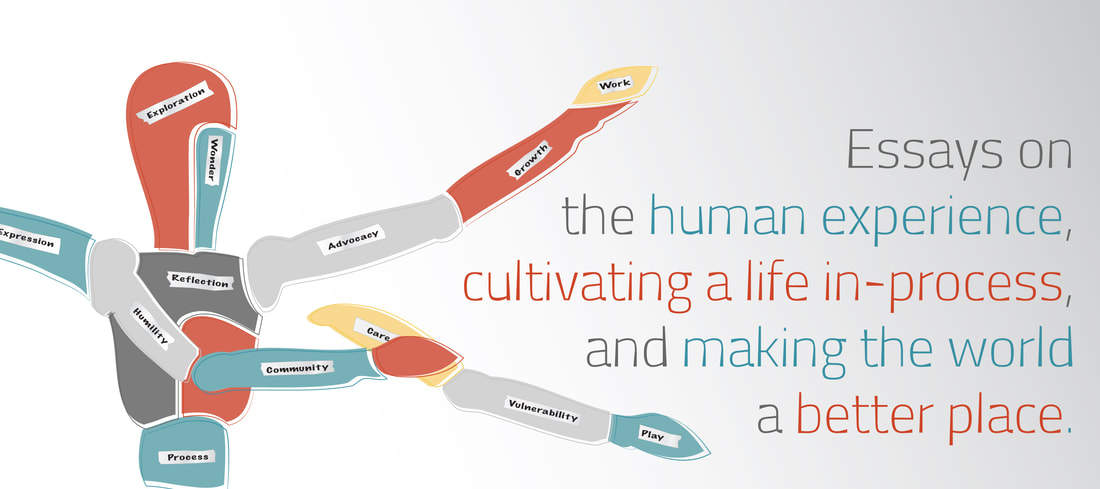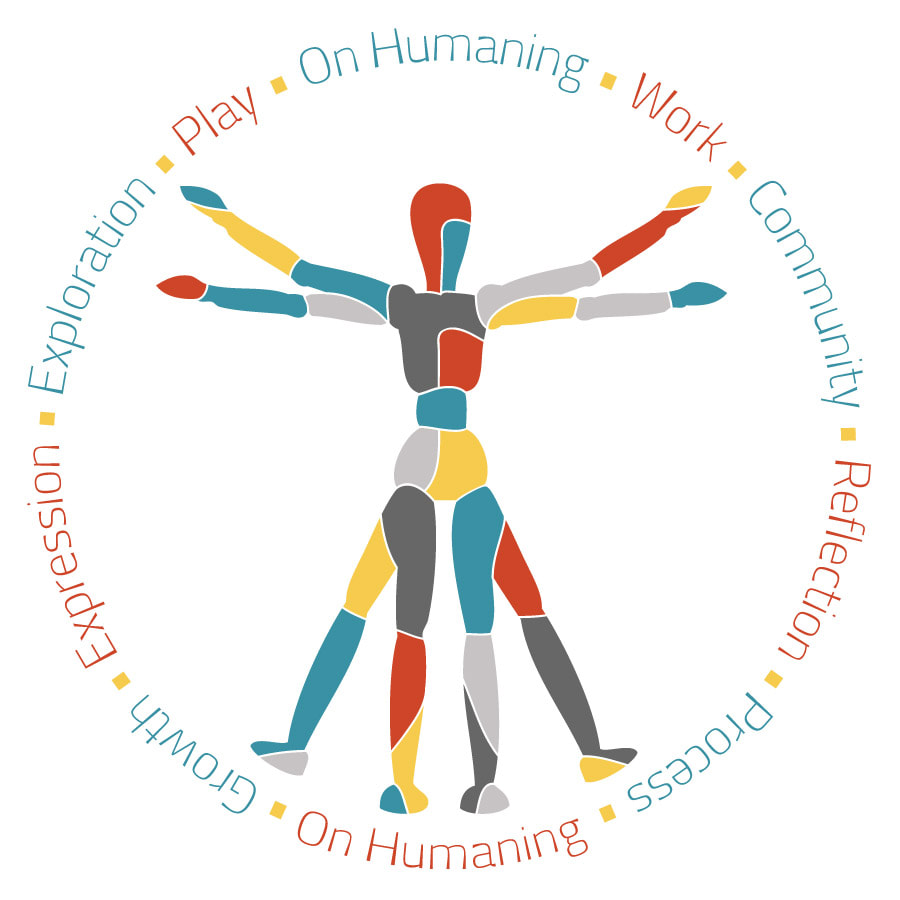|
There are many ways human beings connect with each other. Physically, emotionally, through shared interests and experiences. It can happen accidentally or on purpose. I enjoy connecting with people in many ways, and I really enjoy getting to know them. When I meet someone new I am interested in what they are passionate about and why, what they cultivate in their life, their favorite ways to play, how they feel about the world and their experience in it. I am fascinated by the parts of ourselves that lurk under the surface. I am intrigued by how my internal world aligns with and differs from that of someone else. I think it’s amazing that two people who are present for the same event can leave with two completely different experiences. And I think that is the great value of doing personal work in concert with others. I have spent a lot of time doing personal work in various forms. I have been to counseling, alone and with a partner. I journal regularly. I meditate. I sit with myself in my Taiji practice, reflecting on deep internal questions and allowing space for honest answers to surface. It’s rewarding and it’s profound. It can be even more amazing in connection with another human. Processing emotions and experiences with trusted friends and family is helpful because it provides an outside perspective to consider. No matter how well I get to know myself, or how much time I spend exploring my internal world, there are still things I cannot see or recognize. There are still things I'm hiding from myself. Recently I took a course for white folks about how to effectively talk to a racism skeptic and convince them that racism is real and that it is a problem in this country. I learned the most powerful tool I have as a white person are the stories of my own racially problematic thoughts, feelings, and actions. One homework assignment asked for a story about a time when I did something because I held a racist belief. I thought a lot about it and came up with plenty of surface level examples. Like using racial slurs before I knew they were rooted in racism, or laughing at racist jokes. While those things make current me cringe, they didn’t feel significant enough to convince a skeptic that racism is real. So I kept digging. I wanted a more recent example. Something I still do, even after all the years of work I have put in. I thought about all the mostly white spaces I spend time in, like contra dances (when there isn’t a pandemic). I thought about all the times I made sure to say hello and welcome a new person. I thought about the times when that new person was not white, and my actions didn’t seem any different to me. So where was my racism hiding? I felt stuck. I asked my partner if I could talk it through with him. He agreed, and as I told my story he asked me questions. I welcomed new white dancers most of the time, but I made sure to welcome new non-white dancers every time. Why? Because contra is such a white space that they might feel like they don’t belong. Why? Because the other white dancers might think of them as an anomaly, or treat them differently than any other new dancer… Just like I was doing! Suddenly I realized I wasn’t protecting the new person from other white people who thought they didn’t belong; I thought they didn’t belong. In my mind, the default for that space is white and non-white people don’t belong in default white spaces. That is a racist belief. My racist belief. And I had hidden it from myself behind a mask of being extra helpful and welcoming. Processing that in connection with my partner helped me identify that mask for what it was and peel it back to look at the truth underneath. I might have arrived at that realization on my own, but it probably would have taken a lot longer. Partner work has helped me in a similar way in martial arts. I can practice almost anything by myself, but I won’t really know what works until I get to try what I’ve been training with another person. Then all the holes in my game can be revealed. A training partner might react in an unexpected way, or see a solution to a problem I didn’t consider. My first Mo Duk Pai teacher used to say “contact changes everything,” and he’s still right. There is no substitute for the feedback from trying something that worked in the vacuum of solo practice while someone is throwing strikes my way, or actively trying to stop me. There is no replacement for the feedback from connecting my strike to a tangible target. And there is no way to manufacture the creativity of building on each other’s ideas during sparring or other fighting games. The opportunity to expand on another person’s idea and for someone else to further expand from there is the power of human connection. I can think about a terrific fix for the world and imagine a better potential future for humankind all by myself. But I have only my own lived experience, so I cannot imagine all the wants and needs and brilliant ideas of the rest of humanity. We built this world through our connections to each other. It's going to take all of us to build a better future through healthier connections. I heard a speaker at a protest this week talk about their experience in toxic relationships. They shared one thing they learned about toxic relationships is that eventually you have to let them go. They described America as currently having a toxic relationship with our police, our economy, our education and healthcare systems. And they're right. We don't need to keep propping up systems that don't support everyone, and we shouldn’t keep systems that dehumanize anyone. We don't need to maintain connections that are unhealthy. Human connection is beautiful and powerful. It built cities and systems and civilizations. Unfortunately, somewhere along the way we forgot that the systems and societies themselves are not what actually matters: the people who make up those systems matter. As people, we need to connect in different ways than we are connecting now. We need to leave our toxic relationships with our institutions and relate to each other in healthier ways. We can do it. We are all capable. And once we do, then we can have healthy relationships with equitable systems, institutions, and societies built of the people, by the people, and for the people. Information and Inspiration
0 Comments
Your comment will be posted after it is approved.
Leave a Reply. |
AuthorJaydra is a human in-process, working to make the world a better place. Sharing thoughts, feelings, and observations about the human experience. Archives
March 2024
Categories |

 RSS Feed
RSS Feed
